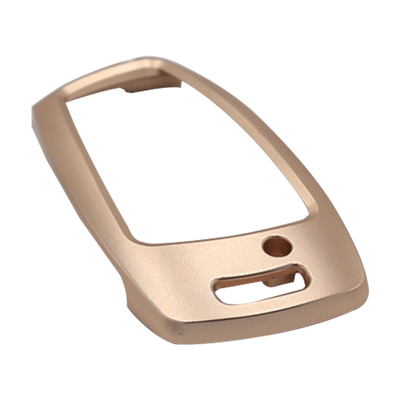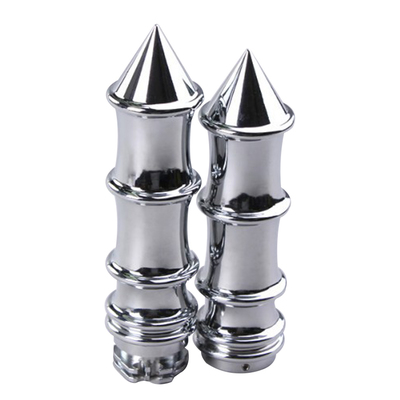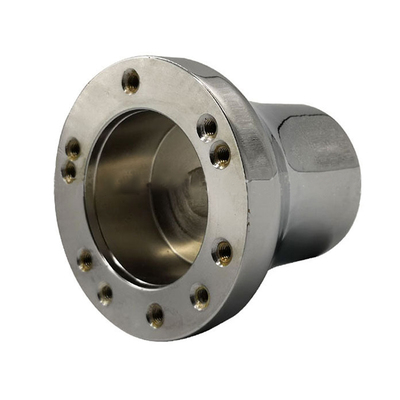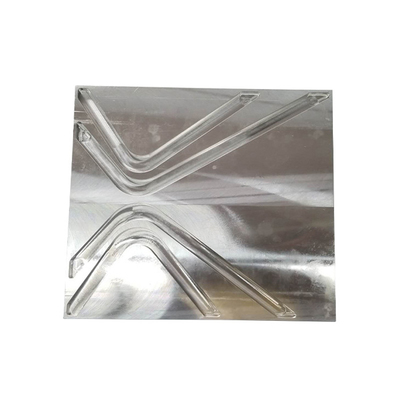Introduction Guide To Operating CNC Lathes
Introductory knowledge of CNC lathe programming
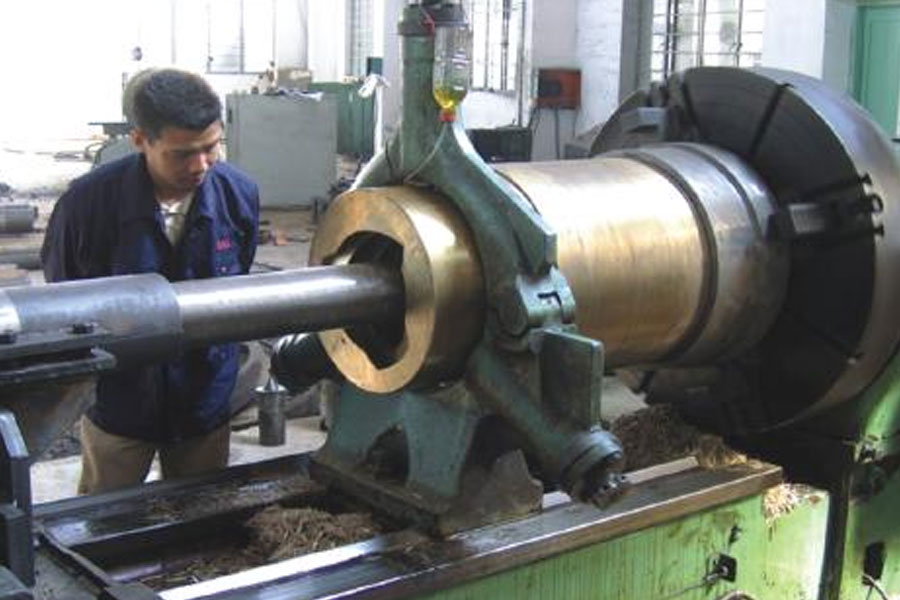
The coordinate system and movement direction of the lathe
- 1. It is always assumed that the workpiece is stationary and the tool moves relative to the workpiece.
- 2, the coordinate system adopts the right-handed Cartesian coordinate system. As shown in the figure, the direction of the thumb is the positive direction of the X axis, the index finger is pointing in the positive direction of the Y axis, and the middle finger is pointing in the positive direction of the Z axis. On the basis of determining the X, Y, and Z coordinates, according to the right-hand screw rule, the directions of the three rotating coordinates of A, B, and C can be easily determined.
- 3. The movement of the specified Z coordinate is determined by the spindle that transmits the cutting power. The coordinate axis parallel to the spindle axis is the Z axis, and the X axis is the horizontal direction, parallel to the workpiece clamping surface and perpendicular to the Z axis.
- 4. It is specified that the direction of the tool away from the workpiece is the positive direction of the coordinate axis.
When the lathe is a front tool post, the X-axis is forward and points toward the operator. When the lathe is a rear-mounted tool post, the X-axis is forward and backward, away from the operator.
2. Lathe coordinate system
Lathe coordinate system is a ZOX axis rectangular coordinate system established with the origin of the lathe as the origin of the coordinate system.
1.Machine Origin
The machine origin (also known as the mechanical origin) is the origin of the lathe coordinate system. It is a fixed point on the lathe. Its position is determined by the design and manufacturing unit of the lathe, and it is usually not allowed to be changed by the user.
Introduction to CNC lathe operator must-read knowledge
2.Lathe Reference Point
The reference point of the lathe is also a fixed point on the lathe, which is the limit position of the tool holder to limit the movement of the tool holder with mechanical blocks or electrical devices. The function of the lathe reference point is to position the lathe coordinate system. Because no matter where the tool post stays after each startup, the system sets the current position to (0, 0), which will cause the datum to be inconsistent. After turning on the CNC lathe, it must first go back to the reference point (also known as the zero point) operation. After the lathe is powered on and before returning to the reference point, no matter where the tool post is, the coordinate values of Z and X displayed on the CRT at this time are all 0. Only after completing the operation of returning to the reference point, the tool post moves to the lathe reference point. At this time, the coordinate value of the tool post reference point in the lathe coordinate system is displayed on the CRT, that is, the lathe coordinate system is established.
3. Workpiece coordinate system
During CNC lathe processing, the workpiece can be clamped at any position under the lathe coordinate system by the chuck. As a result, programming in the lathe coordinate system is very inconvenient. Therefore, programmers usually choose a workpiece coordinate system when writing a part processing program, which is also called a programming coordinate system. The coordinate values in the program are based on the workpiece coordinate system.
The origin of the workpiece coordinate system can be determined by the programmer according to the specific situation, and is generally set at the design reference or process reference of the drawing. According to the characteristics of CNC lathes, the origin of the workpiece coordinate system is usually set at the center of the left and right end faces of the workpiece or the center of the front end of the chuck.
How to choose tools for CNC lathes
In the process of CNC machining, the selection of tools is a very important link. Choosing the right tool can not only greatly improve the processing efficiency of the machine tool, but also improve the machining quality of the parts. Choosing the wrong tool will result in half the effort, or even scrap the parts. Compared with ordinary machine tools, the spindle speed of CNC lathes is much higher, and it has a larger output power. Because of this, compared with the traditional machining process, CNC machining has stricter tool selection. This harshness is mainly manifested in the accuracy, strength, rigidity and durability of the tool. In addition, CNC tools need to have stable dimensions to facilitate installation and adjustment. This requires the CNC tool to have a reasonable structure and standardized and serialized geometric parameters. To improve the processing market of CNC lathes, efficient and stable CNC tools are one of its prerequisites. How to choose CNC tools? Which mainly depends on the following aspects: the geometry of the processed part, the material state, the rigidity of the fixture and the tool selected by the machine tool. The following aspects should be considered:
- 1. The type, specification and accuracy grade of CNC tools should be able to meet the requirements of CNC lathe processing.
- 2. High precision. In order to meet the high precision and automatic tool change requirements of CNC lathe processing, the tool must have high precision.
- 3. High reliability. To ensure that there will be no accidental damage and potential defects of the tool in the CNC machining, which will affect the smooth progress of the machining, the tool and the accessories combined with it must have good reliability and strong adaptability.
- 4. High durability. The durability of tools made of different materials is also different, such as: cemented carbide tools; high-speed steel tools; diamond tools, etc. The tools processed by CNC lathes, whether in roughing or finishing, should have higher durability than those used in ordinary lathes, so as to reduce the number of times of changing or grinding tools and tool setting, thereby improving the performance of CNC lathes. Processing efficiency and guarantee processing quality.
- 5. Good chip breaking and chip removal performance. In CNC lathe processing, chip breaking and chip removal are not handled manually like ordinary machine tools. Chips are easy to wrap around the tool and workpiece, which will damage the tool and scratch the machined surface of the workpiece, and even cause injury and equipment accidents. , Which affects the processing quality and the safe operation of the machine tool, so the tool is required to have better chip breaking and chip removal performance.
Please keep the source of this article for reprinting:Introduction Guide To Operating CNC Lathes
Reprint Statement: If there are no special instructions, all articles on this site are original. Please indicate the source for reprinting:https://www.cncmachiningptj.com/,thanks!
 3, 4 and 5-axis precision CNC machining services for aluminum machining, beryllium, carbon steel, magnesium, titanium machining, Inconel, platinum, superalloy, acetal, polycarbonate, fiberglass, graphite and wood. Capable of machining parts up to 98 in. turning dia. and +/-0.001 in. straightness tolerance. Processes include milling, turning, drilling, boring, threading, tapping, forming, knurling, counterboring, countersinking, reaming and laser cutting. Secondary services such as assembly, centerless grinding, heat treating, plating and welding. Prototype and low to high volume production offered with maximum 50,000 units. Suitable for fluid power, pneumatics, hydraulics and valve applications. Serves the aerospace, aircraft, military, medical and defense industries.PTJ will strategize with you to provide the most cost-effective services to help you reach your target,Welcome to Contact us ( [email protected] ) directly for your new project.
3, 4 and 5-axis precision CNC machining services for aluminum machining, beryllium, carbon steel, magnesium, titanium machining, Inconel, platinum, superalloy, acetal, polycarbonate, fiberglass, graphite and wood. Capable of machining parts up to 98 in. turning dia. and +/-0.001 in. straightness tolerance. Processes include milling, turning, drilling, boring, threading, tapping, forming, knurling, counterboring, countersinking, reaming and laser cutting. Secondary services such as assembly, centerless grinding, heat treating, plating and welding. Prototype and low to high volume production offered with maximum 50,000 units. Suitable for fluid power, pneumatics, hydraulics and valve applications. Serves the aerospace, aircraft, military, medical and defense industries.PTJ will strategize with you to provide the most cost-effective services to help you reach your target,Welcome to Contact us ( [email protected] ) directly for your new project.

- 5 Axis Machining
- Cnc Milling
- Cnc Turning
- Machining Industries
- Machining Process
- Surface Treatment
- Metal Machining
- Plastic Machining
- Powder Metallurgy Mold
- Die Casting
- Parts Gallery
- Auto Metal Parts
- Machinery Parts
- LED Heatsink
- Building Parts
- Mobile Parts
- Medical Parts
- Electronic Parts
- Tailored Machining
- Bicycle Parts
- Aluminum Machining
- Titanium Machining
- Stainless Steel Machining
- Copper Machining
- Brass Machining
- Super Alloy Machining
- Peek Machining
- UHMW Machining
- Unilate Machining
- PA6 Machining
- PPS Machining
- Teflon Machining
- Inconel Machining
- Tool Steel Machining
- More Material

